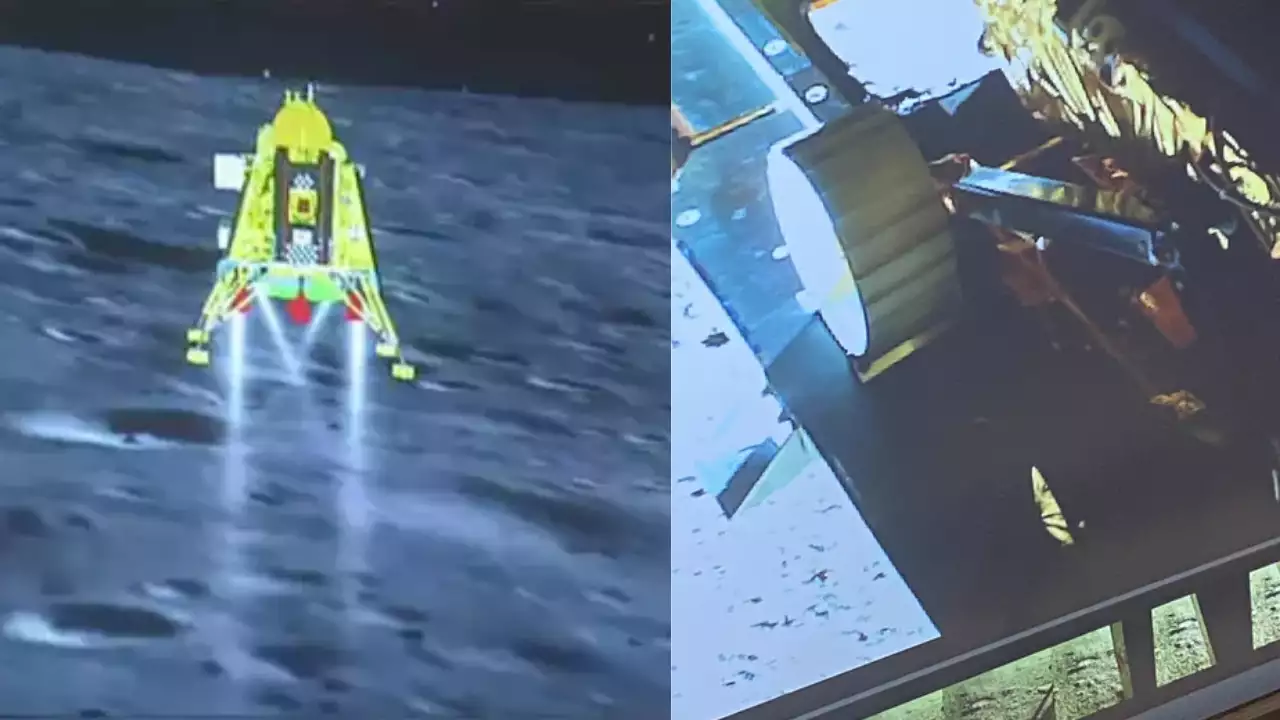ISRO’s Chandrayaan 3 Lander has made a second successful soft landing on the Moon, after a ‘hopping’ experiment where it fired its engines to lift off briefly from the lunar surface.
The spacecraft only jumped to an altitude of 40 centimetres and moved between 30 and 40 centimetres to the side. With the manoeuvre, the Vikram lander has exceeded its planned mission objectives. The kick-start capability will benefit future sample return missions by ISRO, as well as crewed spaceflights
Before the jump, the Vikram lander first pulled back the instruments that it had deployed on the surface of the Moon, including the sensitive array of accelerometers that forms the seismometer, Instrument for Lunar Seismic Activity (ILSA) and Chandra’s Surface Thermophysical Experiment (ChaSTE) which consists of a probe that digs 10 centimetres into the surface to explore the thermo-physical properties of Moondust. The ramp used to deploy the Pragyan Rover was also folded back for the hop.
After successfully jumping sideways, the Vikram lander redeployed the ramp, along with the ILSA and ChaSTE payloads. The Pragyan rover has already been prepped to survive the long, harsh lunar night where temperatures can drop below -180°C. The batteries are fully charged, the solar panels are pointing towards the Sun, and ground stations are listening for the signal.
As Chandrayaan 3 prepares to survive the lunar night
Vikram will also be put to sleep ahead of night falling near Shiv Shakti Point, the location at which the Chandrayaan 3 mission landed on August 23, 2023. The planned science operations on the mission have been conducted. Ground tests have indicated that the instruments on board can survive the lunar night. It can spring back to life on September 22, 2023, when the Sun rises above Shiv Shakti Point again. In this case, the science operations of the Lander and Rover will continue.
Also Read: India’s Chandrayaan-3 moon rover Pragyan snaps 1st photo

